| Author | Message | ||
| Keith Wood (Ft6)
Registered Member Username: Ft6 Post Number: 123 Registered: 8-2008 Posted From: 75.208.15.15 Rating: |
Facts about HDTV and our coaches. There's a lot of misinformation and rumor floating around about the jump to HDTV from the old NTSC system. In a nutshell, all that has happened is that the type of signal has changed. It's just like changing from English to Japanese. The same range of UHF frequencies are still being used, so your antennas will work just fine. Radio waves are radio waves – it's the method of modulating them which has changed. With this change, however, the channels are narrower, so they can put more content into less bandwidth. Think of it like turning a highway that has 4 wide lanes into an 8-track railway. The digital channels can be narrower, just like a railroad, for the same reason – everything it closely regimented so that there is no wandering. Remember the “fine tuning” knobs on older TVs? These are a thing of the past. If you have cable or satellite TV, your old TV sets will continue to work. The only change is to over-the-air broadcasts, which are directly received by your set. A converter box will work for any number of TV sets, if you are willing to have them all on the same channel at any given moment. It will also work for VCRs and DVD recorders. Some of the HDTV units sold over the last several years were actually MONITORS, not full HDTV sets, and need to be hooked up to a tuner to pick up the new signal. This was done because, until fairly recently, there was a behind-the-scenes battle going on over just what the HDTV over-the-air standard was going to be, with several competing and incompatible formats being tested. With the cost of HDTV tuner components running over $200 (compare that to the $12 cost of an NTSC tuner), manufacturers wanted to make sure that their products would work. So, the bottom line: Yes, you need an HDTV tuner (which may or may not be in the HDTV monitor you bought). No, you don't need a new antenna. You don't need to change ANYTHING if you are ONLY watching with a cable or satellite system, DVDs or a VCR. | ||
| Edward J. Sommers (Sommersed)
Registered Member Username: Sommersed Post Number: 46 Registered: 10-2004 Posted From: 148.78.155.174 Rating: N/A |
That's well and fine, however, in place of where you used HDTV you really mean DTV (digital television), I believe. While HDTV is digital, digital is not necessarily HDTV. The changeover was from analog to digital! Ed | ||
| George M. Todd (George_mc6)
Registered Member Username: George_mc6 Post Number: 883 Registered: 8-2006 Posted From: 64.55.111.6 Rating: N/A |
Umm, The "old" analog TV sets, with or without fine tuning, used VHF antennas which don't work now. Channels 2-13 on rabbit ears are gone. G | ||
| R.C.Bishop (Chuckllb)
Registered Member Username: Chuckllb Post Number: 815 Registered: 7-2006 Posted From: 75.209.46.106 Rating: N/A |
Xactly...and that is where the "industry" let us all down from my point of view....we bought one that has "HDTV" on the face...what is one to conlcude from that? Kinda like stating on a tag "Genuine Sheepskin" ...only to find out it is "genuine" man made sheepskin. All the rhetoric over the years and months, to "inform" the unknowing, un-understanding, stupid (like me) public that the acronym "HDTV" and High Definition TV are the same, which to my feeble way of thinking is the same EXACT thing...no other questions necessary....was meant to sell TV's, spend the tax payer's money (coupons) for the benefit of the manufacturer and promote the interest of few at the expense of many. Now, those of us, perhaps millions, who were caught in that "trap" get to spend it all over again. And yes, in SOME ways HDTV is better...in other ways not as good. I rest my case....  now off to Sam's or wherever to contribute another few hundred so that we can "enjoy TV on the road"...without the addition of a "box"...which is another subject all to it's own. I have four of them and know of what I might speak since we have now had the period of about 1 year in experience.... now off to Sam's or wherever to contribute another few hundred so that we can "enjoy TV on the road"...without the addition of a "box"...which is another subject all to it's own. I have four of them and know of what I might speak since we have now had the period of about 1 year in experience.... Off the Podium now; thanx for "listening"...as it were.  Have a great day everyone. RCB | ||
| Wec4104 (Wec4104)
Registered Member Username: Wec4104 Post Number: 48 Registered: 7-2008 Posted From: 68.80.242.72 Rating: N/A |
It is not completely accurate that all VHF television is gone and that VHF antennas do not work anymore. Most stations went to a UHF frequency in the digital changeover, but not all. It depends on the local stations in your area. I receive local broadcasts from the Philadelphia area stations. The ABC affiliate (WPVI) made the switch to digital, but is still broadcasting on a VHF frequency. It is actually a pain, because I'd rather just have a UHF antenna and be done with it. But for WPVI, I need to keep a VHF antenna. | ||
| Nick Badame Refrigeration Co. (Dnick85)
Registered Member Username: Dnick85 Post Number: 309 Registered: 2-2006 Posted From: 70.208.181.16 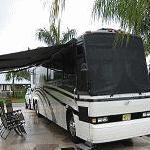 Rating: N/A |
Hi Keith, You are referring to the new Digital broadcast as HD and it's not exactly that. "HD" is High Deffinition, though some broadcast networks are sending HD out, most are not and the picture you are seeing through your antenns is just in Digital and not annalog anymore. And No, you don't need a HDTV tuner, you just need a digital tuner to recieve the new signal. What Is the Difference Between Analog and DTV Broadcasting? DTV is an advanced broadcasting technology that replaces analog over-the-air broadcasting. Digital broadcasting allows stations to offer improved picture and sound quality along with a host of other advantages over analog broadcasting. For example, rather than being limited to providing one analog program, a broadcaster is able to offer a super sharp High Definition (HD) digital program or multiple Standard Definition (SD) digital programs simultaneously. Digital television offers many advantages over analog television for viewing broadcast TV. A broadcaster also can use its DTV signal to provide video and data services that are not possible with analog technology. Full-power television stations serving every market in the U.S. are delivering DTV programming. What Do I Need for DTV Picture Reception Over-The-Air? You need one of the following: A TV set with a digital tuner. OR An analog TV set connected to a digital-to-analog converter box. In either case, you will need an appropriate antenna connected to the TV set or the converter box; either an outdoor rooftop antenna or an indoor antenna (such as “rabbit ears” for VHF reception and a loop or bowtie for UHF reception). If you have a digital TV set, you will not need any additional equipment (with the exception of an antenna) to receive over-the-air digital broadcast programming. However if you have an analog TV set, a digital converter box must be connected between the antenna and the analog TV to receive and display over-the-air digital programming. Make sure that you have all of the DTV equipment you need. DTV equipment can be purchased as an integrated set or as separate components. "Integrated" digital TV sets have both a built-in digital tuner and a digital monitor to display the programming. You will also need an antenna that provides good reception of signals on both VHF and UHF channels. The performance capabilities of TV antennas varies significantly, so make sure to talk to retail consultants and look at information on the packaging and/or the Internet to make sure that any new antenna you may choose provides good reception of both VHF and UHF channels. In addition, if you use an indoor antenna and receive signals on VHF channels, you may need to use an antenna with amplification. If you buy a digital monitor only (without an integrated digital tuner), you will need a stand-alone digital tuner, a cable set-top box, a fiber service set-top box or a satellite set-top box to watch DTV. Digital Cable Ready (DCR) or "plug-and-play" TV sets are also available. These can be used to receive digital cable TV (and often HD over cable) without a separate set-top box. A CableCARD is needed to watch certain cable programming. These sets do not work directly with satellite -- you still need a set-top box to view satellite programming. Ask your retailer what connectors you need to make sure your new DTV set works with your other electronic equipment (DVD player, DVR, camcorder, VCR, computer, video games, and other equipment). The electronic equipment you have now should work with your new DTV, but you may need new connectors. Make a list of what you have now and ask your retailer what you need to connect the components. Analog TV sets will need additional equipment to receive over-the-air television when the DTV Transition is completed. All broadcast TV stations in the country have temporary use of a second, separate channel so that they can transition from analog broadcasting to digital. Hope this clears up some confusion Nick- (Message edited by dnick85 on June 14, 2009) | ||
| Chuck Newman (Chuck_newman)
Registered Member Username: Chuck_newman Post Number: 364 Registered: 1-2005 Posted From: 99.0.41.3  Rating: N/A |
Nick, Great write up on the transition and the basic differences between DTV and HDTV. For the technically minded that differecne is a function of pixel resolution and digital modulation. Another story. FYI, the clarity (bandwidth/resolution) of DTV or HDTV has been available since the 60's in the studio with analog video. The consumer never saw it because the weak link was the transmitted signal. Now the weak link is being replaced for better picture at home, and the added services you mention the broadcaster can sell. After 14 years in television broadcasting, I can tell you it is like any other business. Upgrade is to increase revenue for the business by offering additional services with little change in infrastructure. "If you buy a digital monitor only (without an integrated digital tuner), you will need a stand-alone digital tuner, a cable set-top box, a fiber service set-top box or a satellite set-top box to watch DTV." That's true. But we're talking a monitor such as hooked to your computer. A "digital ready" TV without ATSC (digital) tuner, or a plain analog TV, has been illegal to sell in U.S. since either March '06 or '07. As you might expect, eBay violated that law up until the last few months. "The electronic equipment you have now should work with your new DTV, but you may need new connectors. Make a list of what you have now and ask your retailer what you need to connect the components." Slight correction -- the TVs being sold today will work with your existing audio and video equipment. Whether your stuff uses HDMI, coax, fiber, component video, or composite NTSC video, today's LCD models have all the current and legacy connectors on them. You may not be interested in any of this but their are two things you should know: 1. Some stations may have switched from VHF to UHF, but I doubt it since that was not a requirement by FCC. Both VHF and UHF channel assignments are 6 Mhz wide, and both will handle multiple digital subcarriers equally well. | ||
| Kyle Brandt (Kyle4501)
Registered Member Username: Kyle4501 Post Number: 475 Registered: 9-2004 Posted From: 65.4.185.176 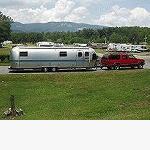 Rating: N/A |
Modern marketing is the reason for so much confusion. They want you to buy more than you need. I once had over 200 channels on a satelite service. 200 channels & nothing worth watching, so I went back to over the air. My RCA TV says "HDTV Monitor". I didn't know anything about digital until we opened the box when we got home & found a separate HDTV tuner. I have noticed the digital signals don't seem to travel as far as the analog ones did. BTW, I went to RadioShack & got the biggest roof mount antenna they sold. I also got the biggest/ newest coax cable they had. I was warned to keep the cable as short as possible too. I use a winguard (sp?) crankup on the camper & it seems to work well when a signal is available . . . . | ||
| Chuck Newman (Chuck_newman)
Registered Member Username: Chuck_newman Post Number: 365 Registered: 1-2005 Posted From: 99.0.41.3  Rating: N/A |
Well, it's obvious the above post was not completed before I hit the wrong key. I thought the delete function was working but I get the response "Sorry, but the message you were attempting to delete was posted more than 0 minutes ago. You are not permitted to delete messages more than 0 minutes old. If the message needs to be deleted, contact a moderator, who can delete the message for you through the administration program." "Please contact Ian Giffin if this problem persists." A point I was going to make is you DO NOT need any special "digital" antenna, amplifier, or coaxial cable to receive digital TV -- be it high definition or not. Save your money and don't fall for the hype. Except if you use indoor rabbit ears -- get some with a preamp and coax. Dump any leftover 300 ohm twinlead cable. 2. Because of different characteristics between digital and analog radio frequency signal, being in a "fringe" TV reception area usually meant you still could receive a noisy picture. Better than nothing. With digital RF it is basically all (clear picture) or nothing (black screen). As a side note, the transition to digital TV is not mandated for television translators (rural or otherwise). Of several hundred in the U.S., I'm sure many will switch to digital but over the course of time. Most of them are not well funded. | ||
| Stephen Fessenden (Sffess)
Registered Member Username: Sffess Post Number: 759 Registered: 1-2002 Posted From: 66.38.120.219 Rating: N/A |
I bought my new antenna from Solid Signal online. I am very happy with the Antennas Direct 8 gang antenna for UHF and high band VHF. The antenna for Channels 8-13 is much smaller than for 2 to 6 and this UHF antenna works pretty well on the high VHF. The 8 gang antenna has a picks up over a much broader area at the same time. It compresses its reception vertically much more than horizontally. I can receive two cities about 90 degrees apart by aiming in the middle. I am also using a Winegard AP 8575 preamp (28db) and a Winegard distribution amplifier (anoather 25db). Winegard has a choice of about 6 preamps with varying combinations of UHF and VHF gain so you can choose one that fits your local station patterns. All have a switchable FM trap. DTV seems to be far less sensitive to overdriving the tuner, so I can get away with the exteme gain as long as I am using a really clean preamp and amp. | ||
| Cullen Newsom (Cullennewsom)
Registered Member Username: Cullennewsom Post Number: 86 Registered: 2-2009 Posted From: 67.159.44.61 Rating: N/A |
What we need is a government agency that would be an advocate for the best interests of the people (who'd pay taxes to fund it). This hypothetical government agency might also be helpful in providing guidance to its benefactors. If there were such a thing; it wouldn't look anything like this. http://www.fcc.gov/ | ||
| John MC9 (John_mc9)
Registered Member Username: John_mc9 Post Number: 930 Registered: 7-2006 Posted From: 74.162.93.176 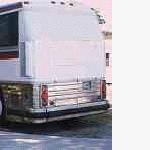 Rating: N/A |
Re: "What we need is a government agency " No, no, no, no, and NO. We've got too many government agencies now! We need less government intrusion, You know, the way our forefather's intended this government to be? Good grief. The FCC wanted to give our Ham Radio frequencies to UPS and other entities for their own radio communications. We fought like hell to save the bands we had, and it wasn't an easy fight. When you stop to realize just how much big corporations dump into "lobbying" certain "government agencies" headed by former CEOs of certain businesses, and how little we contribute to the fight, even vocally, it should be self-explanatory.. The move to forced digital service is akin to the Ham radio situation. And that Cullen, is where the real problem is... Too much government, and too little questioning of the so-called "authority". | ||
| Austin Scott Davis (Zimtok)
Registered Member Username: Zimtok Post Number: 333 Registered: 9-2006 Posted From: 216.37.73.226 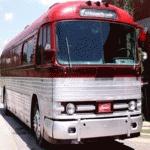 Rating: N/A |
I've had a rooftop antenna hanging in my Attic for several years now. It has always received UHF and VHF signals very well. (I have always received signals from Memphis, Jackson TN, and Northern Mississippi using a signal booster) I installed a converter box on my Bedroom TV and bought a DVD/VCR digital receiver for the living room TV. When they were first installed I got a jump in the number of stations I received from 8 stations to 19. I just recently rescanned since the change and picked up around 10 more stations bringing my total up to about 25-30 stations. Now to be fair most of the secondary stations are currently running local weather/news 24/7 so I skip right over them most of the time. And being in the Mid-south there seem to be a lot of religious stations like 40-1 through 40-6. I have not had cable TV since I moved from Naples FL to the Memphis area in 1993 mainly because my work/gig schedule does not leave me much time for watching TV. I am very pleased with the change to Digital, and I think it will only get better. . | ||
| Chuck Newman (Chuck_newman)
Registered Member Username: Chuck_newman Post Number: 367 Registered: 1-2005 Posted From: 99.0.41.3  Rating: N/A |
John, As usual you're right on target. That has been the reality for at least 100 years and is more so today. Simply because it is cost effective and it works for big business. I agree with everyone that DTV/HDTV (actually, there is 4 different formats), gives a much more life-like picture on the television. But after 60 years of analog television, and 20+ years of digital video technology, it is naive to think the transition was done for your viewing pleasure. You can now have HDAM and HDFM from many of your favorite radio stations. But the additional services on digital subcarriers are not free. From a technical perspective, "special service" subcarriers on FM have been around since the '60s. Digital now offers more channels within the same allowed spectral bandwidth of each radio station. The same format for television. More choices for the consumer, and more revenue for the broadcaster. And the world continues to turn into a new day. | ||
| Chuck Newman (Chuck_newman)
Registered Member Username: Chuck_newman Post Number: 368 Registered: 1-2005 Posted From: 99.0.41.3  Rating: N/A |
One last word (from me) for clarity amongst the technical mumbo jumbo. I purchased a Winegard RoadStar RS-2000 omni-directional VHF/UHF RV rooftop antenna with preamp to mount on my bus. Before the "digital transition" I thoroughly tested it with both analog and digital transmissions. As expected, it worked perfectly with both, on VHF and UHF. That said, the Winegard site opening page talks about upgrading to "digital antennas". Sorry folks! The reality is television stations, like their radio counterparts, still operate in their assigned channel assignments they always have had. And RF still is RF. The difference between analog and digital transmission is the modulation technique and the bandwidth required. The antenna and preamp do not differentiate between them because they both are RF signals. Actually, whether you believe it or not they both are "analog RF", but that's another subject. Anyone with engineering documentation to the contrary, please present it. Of course, if you just need a new antenna, go for it. We all need to help stimulate the economy. PS: Use RG-6 cable if possible for ALL your TV needs. Less loss and greater shielding than RG-59. | ||
| John Lacey (Junkman42)
Registered Member Username: Junkman42 Post Number: 84 Registered: 3-2007 Posted From: 66.82.9.54 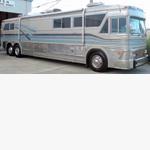 Rating: N/A |
John, as a older ham,WB4CQT I have watched the attacks on spectrum space for a long time. UPS wanted the allocations to sell and for nothing more. I worked as a maintenance provider to the brodcast industry for a long time. I once built and did the license work for a FM low power myself. My logic was why do I need a attorney to represent Me for the issuing of a goverenment license. I did win with great diffuculty. It is about money and power and nothing else. John | ||
| niles steckbauer (Niles500)
Registered Member Username: Niles500 Post Number: 930 Registered: 11-2004 Posted From: 173.78.29.189 Rating: N/A |
What is driving all these changes in communications equipment (and almost everything from toasters to the space station) is the increased development of digital compression in the latter part of the 20th Century - It's the major reason why our recent productivity rates have grown throughout the world - The only problem with digital compression, in what has occured to some as far as the reception problems noted above, is the technology only compresses the content, enabling a shorter transmission time (if you will) - If the signal is "bad" it is exaggerated by the fact that the transmission is compressed - what previously showed on your screen as minor interference, now shows up as a blank or partially pixelated screen - Other than the problems associated with the actual transmission, digital compression has been very good to us (JMO) - FWIW | ||
| Cullen Newsom (Cullennewsom)
Registered Member Username: Cullennewsom Post Number: 107 Registered: 2-2009 Posted From: 98.201.161.214 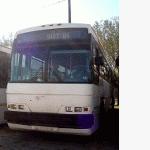 Rating: N/A |
John, I didn't notice your reply until just now. That was sarcasm on my part. What I meant is that the FCC is a pretty terrible advocate for us. My real opinion on the matter is that the FCC should die in a fire. Niles is right, the world is getting smaller. In other words, signal users are closer together. There is a need to use resources including bandwidth more efficiently. That being said, what has the FCC done besides auction off the bands as though they were real estate leases? Where does that money go? What do we get out of the deal when some entity is granted exclusive rights to some bloc of spectrum? What was this thread about? I forgot. Oh yeah, hooray to not being duped into buying "digital" antennas. What a load of baloney. | ||
| John Harrelson (Jharl)
Registered Member Username: Jharl Post Number: 97 Registered: 7-2005 Posted From: 74.166.245.86 Rating: N/A |
will dtv (dvb-t) work while driving down the road like the old days. I am getting ready to install a converter in the bus. |